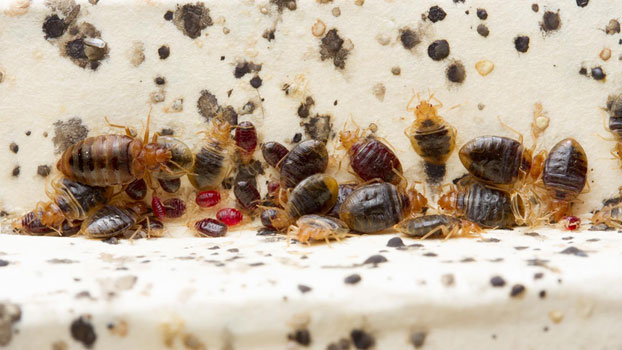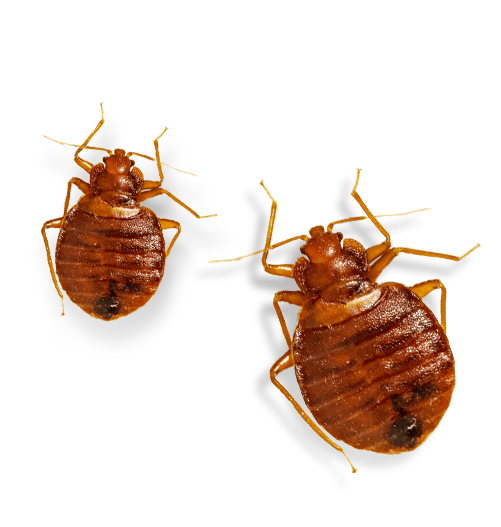Discovering the Scientific Research Behind Bed Bug Warmth Treatments as a Sustainable Pest Administration Strategy
One such method that has acquired grip in current years is the usage of heat treatments to combat bed bug invasions. The ins and outs of exactly how warm successfully gets rid of bed insects and the more comprehensive effects for lasting parasite monitoring techniques make this a subject worth discovering better.
Bed Pest Warmth Therapy Refine

Thermal Death Factor for Bed Bugs
Revealing bed bugs to raised temperatures beyond their thermal resistance range is crucial for accomplishing effective elimination in warmth treatment procedures. The thermal death point for bed pests refers to the temperature level at which these insects can not endure. Research suggests that bed pests start to perish when revealed to temperatures over 113 ° F(45 ° C) for a sustained period. As the temperature level increases, so does the mortality price of bed pests. At around 118 ° F(48 ° C ), bed bugs begin to die quickly, with a death rate of nearly 99% within minutes of direct exposure. This shows the sensitivity of bed insects to high temperatures and highlights the performance of warmth treatments in removing invasions. By getting to and keeping temperatures above the thermal death factor for bed pests, pest administration experts can ensure comprehensive elimination of bed insect populations, consisting of hard-to-reach locations where chemical treatments may be less effective. Comprehending the thermal death point for bed insects is necessary for implementing effective warm therapy methods and achieving sustainable insect administration results.
Benefits of Warm Treatments
Having actually developed the vital thermal fatality factor for bed insects, it is vital to currently explore the significant benefits that warmth therapies provide in successfully eradicating these durable pests. One of the primary advantages is that warm can pass through deep right into gaps and fractures where bed pests hide, making sure that also the most hard-to-reach locations are heated to lethal temperature levels.
Furthermore, warmth treatments are environmentally friendly and non-toxic, making them a lasting parasite management technique. Unlike chemical pesticides, warm treatments do not leave dangerous deposits that can pose risks to human health or the atmosphere. This element is specifically vital in delicate settings such as medical facilities, schools, and domestic areas where chemical use may not be desirable.
Additionally, heat therapies have a high success price in removing bed insect invasions in a single treatment, reducing the demand for numerous sees and lessening interruption to residents. This efficiency not only conserves money and time however also provides satisfaction to those taking care of bed insect problems.
Effectiveness of Warmth Therapy

Research study researches have continually shown the performance of warmth treatments in accomplishing a high rate of bed insect mortality. Effectively conducted warm therapies can reach all the splits and holes where bed bugs might be nurturing, ensuring an extensive strategy to elimination. Warmth therapies have actually the added benefit of eliminating bed pest eggs, which are frequently resistant to conventional chemical therapies. On the whole, the effectiveness of warmth treatments in getting rid of bed pest problems makes them a reputable and lasting bug administration strategy.
Sustainable Bug Administration Conveniences
Carrying out sustainable insect monitoring practices uses lasting advantages for both the setting and public health. By using methods such as warm treatments for insect control, we can lower the reliance on unsafe chemical pesticides that can have unfavorable effects on communities and human health and wellness - DC exterminator. Lasting insect management techniques assist in maintaining biodiversity by targeting specific parasites without harming non-target organisms, therefore keeping a bed bug heat treatment balanced community
Additionally, sustainable bug administration techniques add to the general wellness and wellness of the general public. By minimizing exposure to poisonous chemicals made use of in traditional pest control methods, heat therapies give a safer option for pest administration in domestic, industrial, and public areas. This decrease in chemical usage likewise aids in preventing chemical deposits from polluting dirt, water, and air, securing environmental top quality.
Verdict
To conclude, bed insect heat therapies have actually been revealed to be a reliable and lasting pest monitoring technique. The thermal death point for bed bugs makes them prone to warmth treatments, which have numerous benefits over conventional chemical therapies. The effectiveness of heat therapies in removing bed insect infestations while minimizing ecological impact highlights the potential of this method as a lasting service for parasite control.
The bed insect warmth treatment procedure entails increasing the temperature level within infested areas to a level that properly eliminates bed pests and their eggs. By reaching and keeping temperatures over the thermal death factor for bed insects, insect monitoring experts can guarantee thorough elimination of bed insect populaces, including hard-to-reach locations where chemical therapies might be less reliable. One of the key benefits is that warmth can penetrate deep into gaps and fractures where bed bugs conceal, ensuring that also the most hard-to-reach locations are heated up to dangerous temperature levels. Unlike chemical therapies that might leave behind resistant populaces, warm therapies offer a environmentally pleasant and safe option that can pass through deep into furniture, walls, and other hard-to-reach areas where bed insects conceal.
The thermal death point for bed bugs makes them at risk to warmth therapies, which have countless benefits over typical chemical treatments.